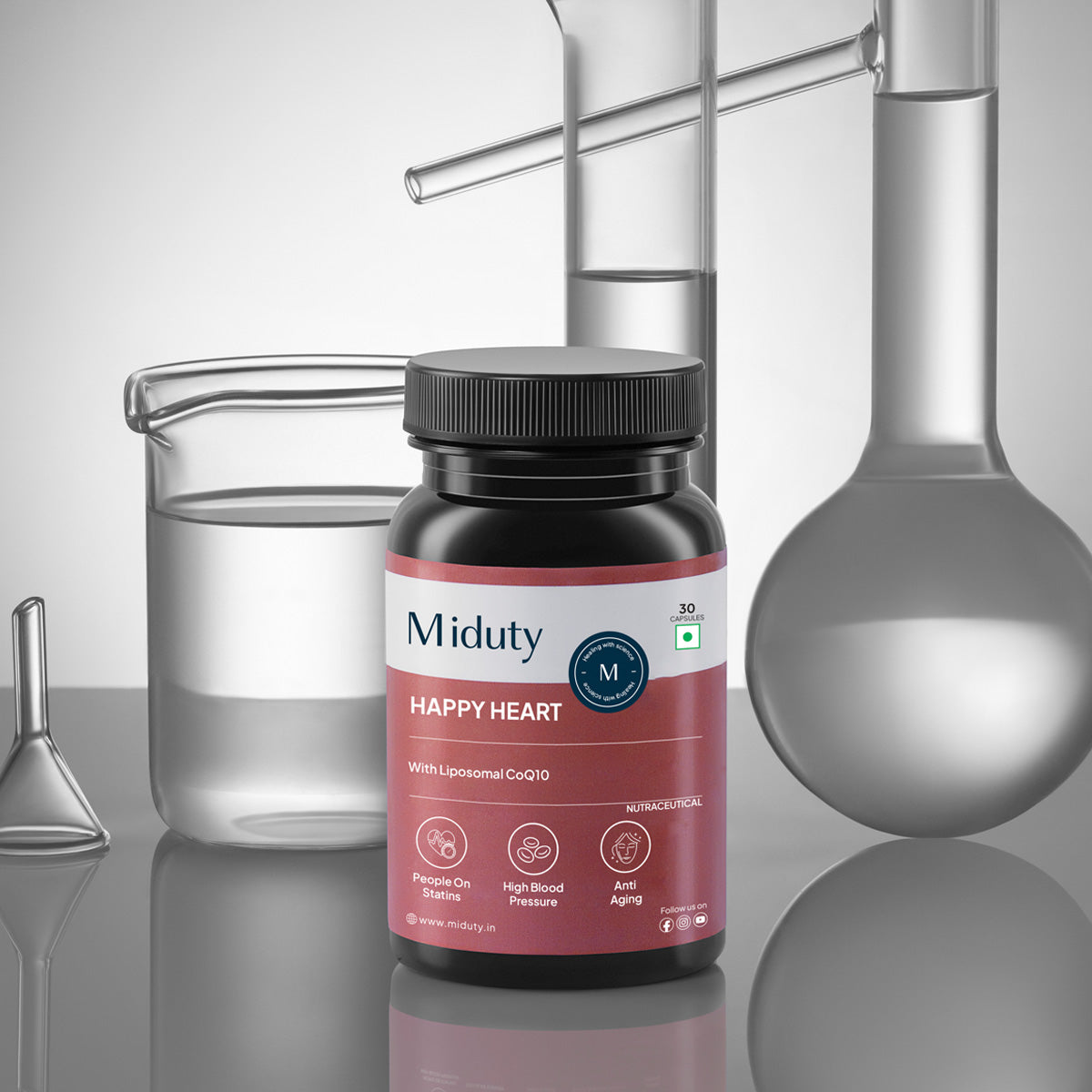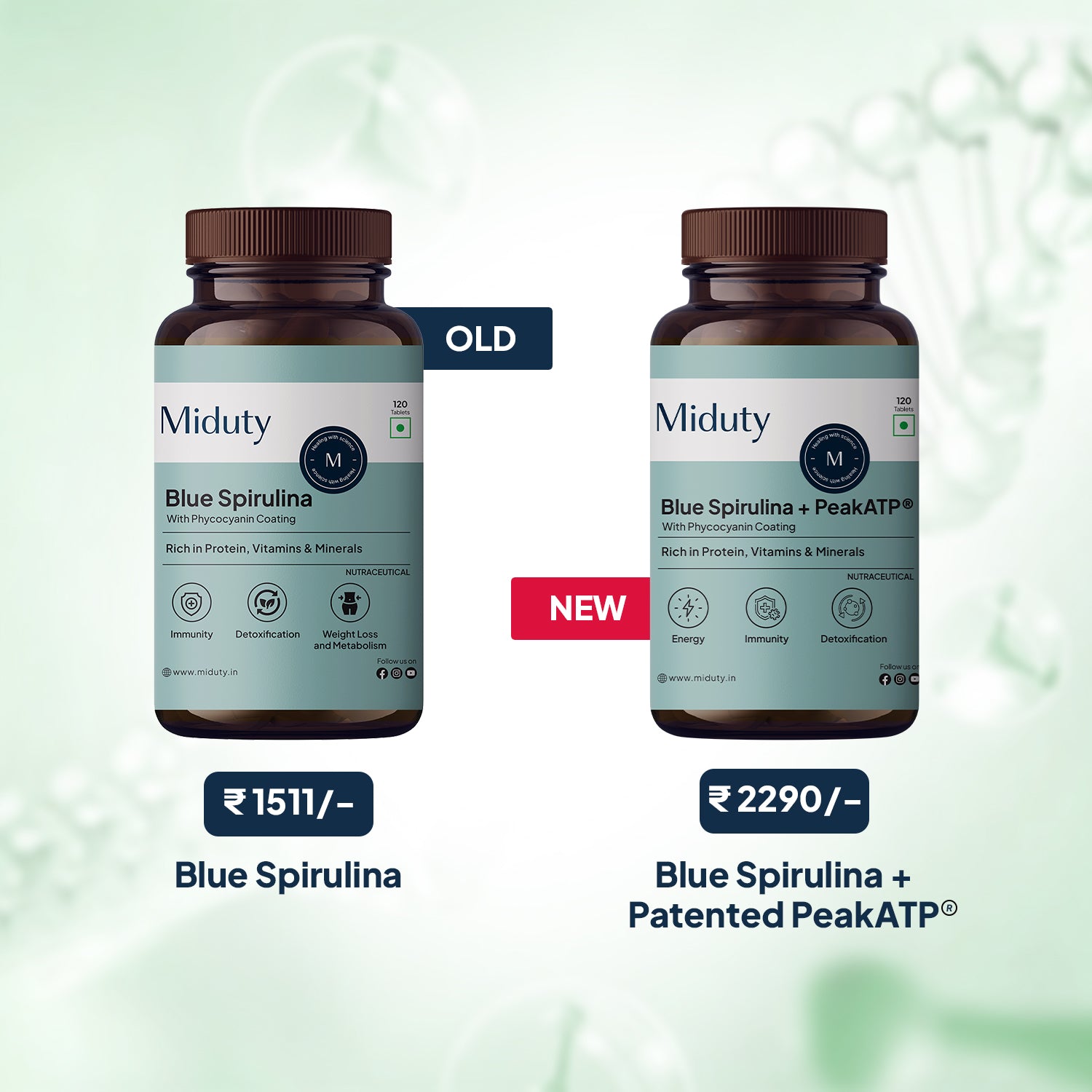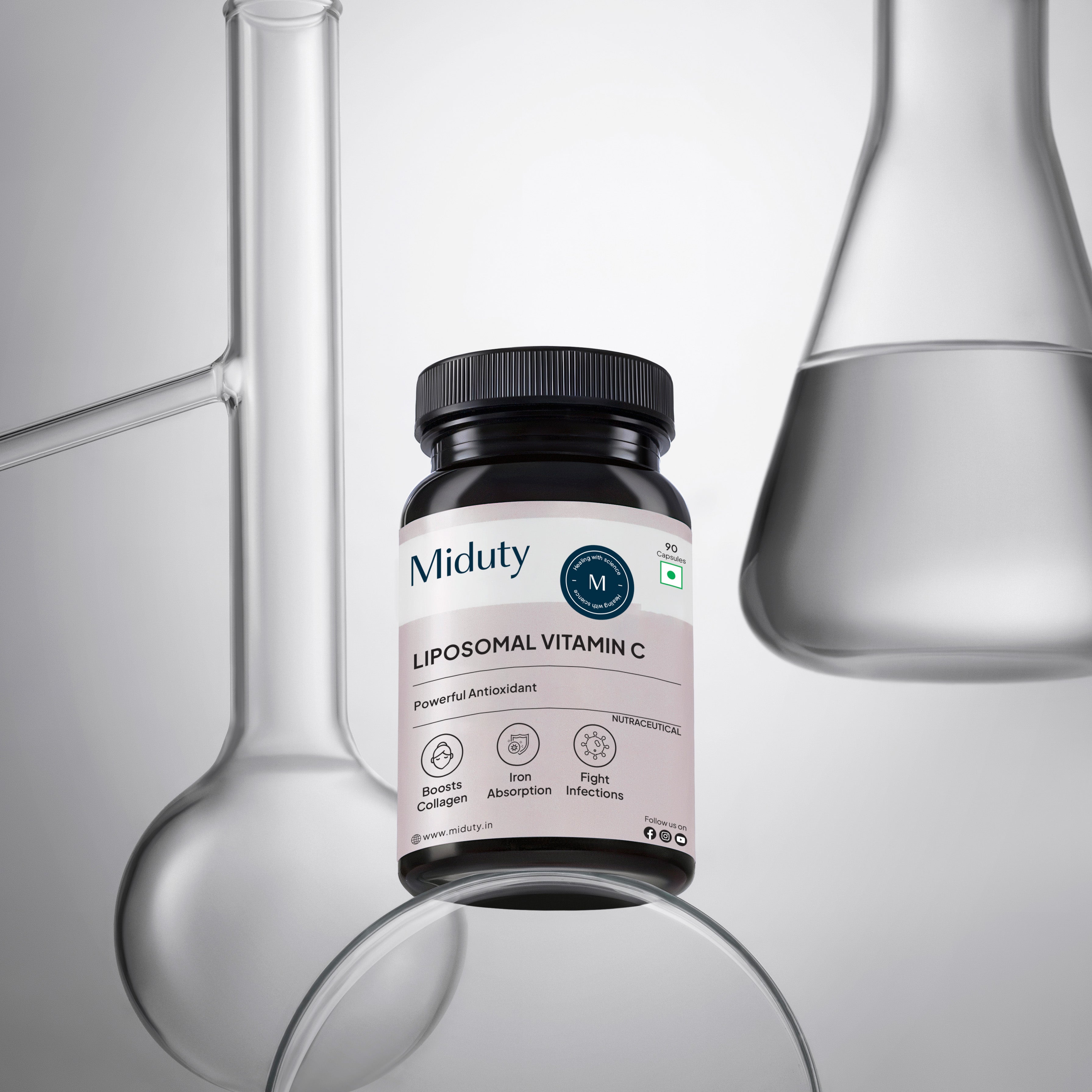
Vayu Mudra: Benefits, Side Effects and How To Do It
Did you know that your fingers hold the key to balancing the air element within your body? This is exactly what Vayu Mudra also known as the "gesture of air"—promises to achieve. In yoga and Ayurveda, Vayu Mudra is a powerful hand gesture that helps manage imbalances related to excess air in the body, offering relief from bloating, gas, joint pain, and even heart issues.
In this blog, we'll dive deep into Vayu Mudra, Apan Vayu Mudra, Apana Vayu Mudra, their benefits, potential side effects, and how to do them properly. Get ready to unlock the secrets of these ancient healing techniques!
Key Takeaways
1. Vayu Mudra balances air energy, aiding digestion, reducing gas, and easing joint pain.
2. Apan Vayu Mudra supports heart health, calming palpitations and enhancing circulation.
3. Apana Vayu Mudra promotes digestion and detoxification, relieving bloating and constipation.
4. Each mudra targets different health concerns: Vayu Mudra for air balance, Apan Vayu Mudra for heart health, and Apana Vayu Mudra for digestion.
5. Moderation is crucial, as overuse may lead to side effects like dryness, Vata imbalance, and stiffness.
What is Vayu Mudra?
Vayu Mudra is a yogic hand gesture that aims to balance the air element (Vayu) within the body. In Ayurveda, Vayu represents movement and is responsible for various bodily functions like circulation, breathing, and the nervous system. An imbalance of Vayu can lead to problems like bloating, gas, anxiety, and restlessness.
To practice Vayu Mudra:
- Sit comfortably in a meditative position.
- Bend your index finger and touch its tip to the base of your thumb.
- Keep the other fingers extended and relaxed.
- Rest your hands on your knees with palms facing upward.
Practicing Vayu Mudra for 15-30 minutes daily can help pacify excess air in the body, fostering calmness and balance.
What is Apan Vayu Mudra?
Apan Vayu Mudra is sometimes called the "Mritsanjeevani Mudra" or the "gesture of life-saving," and for good reason. This mudra is believed to support heart health, reduce palpitations, and even provide emergency relief during heart attacks.
Here's how to perform Apan Vayu Mudra:
- Sit in a comfortable position.
- Touch the tips of the middle finger and ring finger to the tip of the thumb.
- Fold the index finger so it touches the base of the thumb.
- Extend the little finger.
Practicing Apan Vayu Mudra daily helps enhance blood circulation, calms the heart, and promotes emotional stability. It's an essential mudra for anyone concerned about cardiovascular health.
What is Apana Vayu Mudra?
Often confused with Apan Vayu Mudra, Apana Vayu Mudra focuses on aiding digestion and detoxification. This mudra balances the downward-moving energy (Apana Vayu) and is known to relieve constipation, bloating, and indigestion.
To practice Apana Vayu Mudra:
- Sit comfortably.
- Touch the tips of the middle and ring fingers to the tip of the thumb.
- Keep the index and little fingers extended.
This simple gesture, when held for 15-20 minutes, can do wonders for your digestive health by stimulating the proper movement of waste and toxins out of the body.
How is Vayu Mudra, Apan Vayu Mudra, and Apana Vayu Mudra Different?
Though they sound similar, Vayu Mudra, Apan Vayu Mudra, and Apana Vayu Mudra each target different energies and health concerns. Vayu Mudra balances the air element in the body, relieving gas, bloating, and joint pain. Apan Vayu Mudra supports the heart and calms the mind, offering relief during chest discomfort. Meanwhile, Apana Vayu Mudra promotes digestion, detoxification, and elimination of waste. Practicing each mudra correctly helps you address specific health goals, gas, heart health, or digestive wellness depending on your needs.
What are the Benefits of Vayu Mudra?
Vayu Mudra Benefits for Overall Well-Being
Practicing Vayu Mudra regularly offers a wealth of benefits:
- Relieves joint pain and arthritis: Balances the air element, reducing stiffness. [1]
- Eases anxiety and stress: Calms the mind and nervous system.
- Improves digestion: Controls bloating and gas.
- Balances Prana Vayu: Helps regulate overall energy flow, supporting mental clarity.
What are Apana Vayu Mudra Benefits?
This mudra is particularly beneficial for:
- Strengthening the heart muscles: Enhances circulation and oxygenation. [2]
- Regulating heart palpitations: Calms the heart rhythm.
- Alleviating panic and stress: Promotes mental calmness and emotional balance.
- Emergency heart relief: Can be practiced during chest discomfort for immediate support.
What are Apan Vayu Mudra Benefits?
Apan Vayu Mudra is excellent for:
- Stimulating digestion: Supports the downward movement of energy for healthy elimination. [3]
- Detoxifying the body: Helps flush out toxins through improved waste movement.
- Easing bloating and gas: Provides natural relief from abdominal discomfort.
How to Do Vayu Mudra: A Step-by-Step Guide
Mastering Vayu Mudra is simple yet requires mindful practice to reap its full benefits. Here's a step-by-step guide to help you get started:
1. Find a Calm Spot:
- Sit comfortably in Sukhasana (easy pose) or Padmasana (lotus pose).
- You can also sit on a chair with your feet flat on the ground if sitting on the floor is difficult.
2. Position Your Hands:
- Bend your index finger so that the tip touches the base of the thumb.
- Keep the other three fingers—middle, ring, and little—straight but relaxed.
- The thumb gently rests over the folded index finger.
3. Maintain the Gesture:
- Rest your hands on your knees, palms facing upward.
- Close your eyes and focus on your breath, inhaling deeply and exhaling slowly.
- Hold this mudra for 15–30 minutes daily, or divide the time into three 10-minute sessions.
4. Consistency is Key:
- Like any yogic practice, regularity ensures maximum benefits. Try to practice at the same time each day for best results.
How to Practice Apana Vayu Mudra
The Apana Vayu Mudra is a slight variation that brings additional benefits for the heart and digestive system. Let's dive into its practice:
1. Get Comfortable:
- Sit in a relaxed, upright posture—Sukhasana or Padmasana is recommended.
2. Form the Mudra:
- Touch the tips of the middle and ring fingers to the tip of the thumb.
- Fold the index finger so its tip touches the base of the thumb.
- Keep the little finger extended.
3. Relax and Breathe:
- Close your eyes and take slow, deep breaths.
- Focus on your heart center, visualizing energy flowing smoothly.
- Hold the mudra for at least 15 minutes, ideally extending up to 45 minutes if time permits.
4. Practice Regularly:
- For heart health, incorporate this mudra into your daily yoga or meditation routine.
Vayu Mudra Side Effects
While Vayu Mudra is generally safe, it's important to practice it mindfully and in moderation. Here are some potential side effects and precautions to keep in mind:
1. Excessive Dryness: Over-practicing Vayu Mudra can increase the air element excessively, leading to dryness in the skin, hair, and even the joints.
2. Aggravation of Vata Dosha: If you have a Vata-dominant constitution, practicing Vayu Mudra for too long might worsen symptoms like anxiety, restlessness, and insomnia.
3. Joint Stiffness: Although it helps with joint pain, too much Vayu Mudra can sometimes cause stiffness if practiced excessively without balancing it with grounding activities.
Tip: Always combine Vayu Mudra with proper hydration and a balanced diet to avoid these side effects. Listen to your body and consult a yoga expert or Ayurveda practitioner if you experience discomfort.
How to Integrate Vayu Mudra into Daily Practice?
Incorporating Vayu Mudra into your yoga practice can be a game-changer for your overall well-being. Here's how you can make it a seamless part of your routine:
1. Morning Ritual:
- Start your day with 10 minutes of Vayu Mudra during your meditation or pranayama session.
- This can help set a calm and balanced tone for the day ahead.
2. During Yoga Asanas:
- Combine Vayu Mudra with seated asanas like Sukhasana or Vajrasana to enhance its benefits.
- It's particularly effective when paired with deep breathing exercises or slow, mindful stretching.
3. Evening Unwind:
- After a long day, practice Vayu Mudra for 15 minutes to release tension, especially if you experience bloating or stress-related discomfort.
4. Balance with Other Mudras:
- If you're focusing on digestion or heart health, alternate between Vayu Mudra and Apana Vayu Mudra to address different concerns holistically.
How Vayu Mudra and Supplements Work Together?
Practicing Vayu Mudra helps balance excess air (Vata) in the body, easing joint pain, bloating, and nervous energy. When paired with the right supplements like Omega-3 fatty acids, the benefits amplify. Omega-3s reduce inflammation, support joint mobility, and improve brain function perfectly complementing the calming, grounding effects of Vayu Mudra. This combination can naturally enhance mood, relieve stiffness, and support overall nervous system balance when practiced consistently.
Conclusion
Vayu Mudra and its variations, Apana Vayu Mudra and Apan Vayu Mudra, offer profound benefits for both physical and mental well-being. Whether you're seeking relief from bloating, heart issues, or stress, these ancient gestures empower you to heal naturally, right at your fingertips.
By practicing them daily with awareness and balance, you can unlock the incredible power of your own hands to harmonize your body's energies.
Frequently Asked Questions on Vayu Mudra -
Q1 - What is Vayu mudra used for?
Vayu Mudra is used to balance the air element in the body and helps relieve joint pain, gas, bloating, and issues related to excess air like arthritis and sciatica.
Q2 - How much time is needed for Vayu mudra?
Practice it for 15 to 30 minutes daily, either at a stretch or in short intervals.
Q3 - Who should avoid Vayu mudra?
People with Vata imbalance, extreme dryness, or those who feel excessive lightness, cold, or anxiety after practice should avoid or limit it.
Q4 - Can we do Vayu mudra after food?
Yes, Vayu Mudra can be done after food, especially if you experience gas or bloating.
Q5 - Can Vayu mudra be done while walking?
It's best done while sitting still and focused, but it can be done while walking if you're comfortable and maintain the hand position correctly.
References
| Sr. No. | Reference Links |
| 1. | Global Journal of Religions HEALTH FOR MUDRA THERAPY |
| 2. | APANA VAYU MUDRATHERAPY FOR HYPERTENSION |
| 3. | Apan Mudra (25) Benefits of Apana Mudra |













